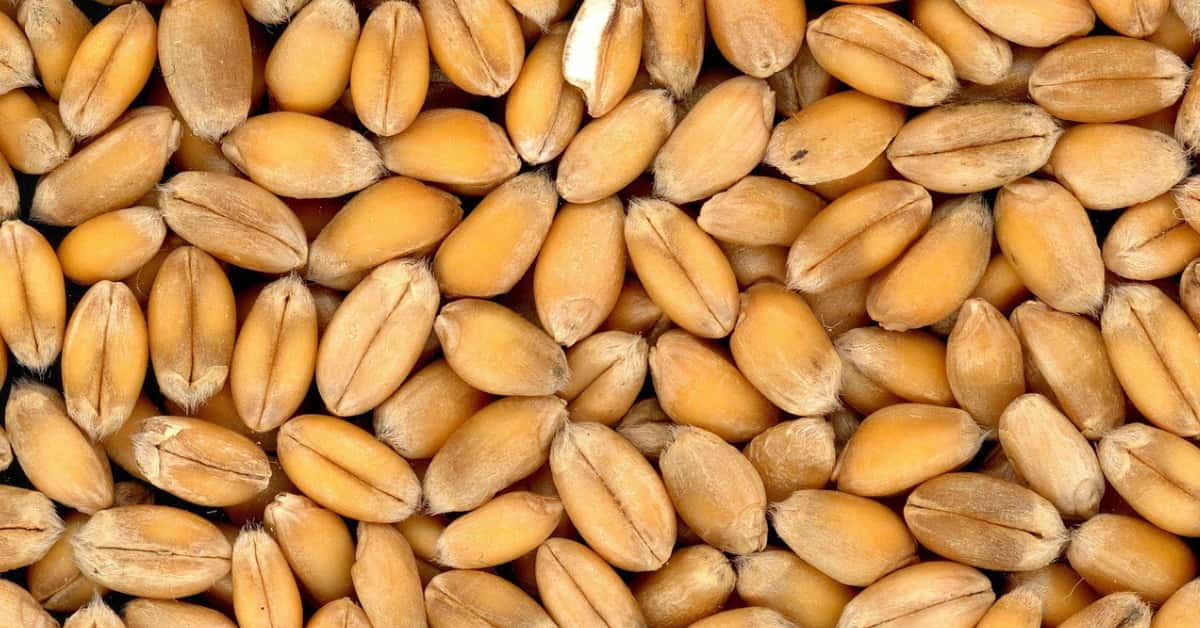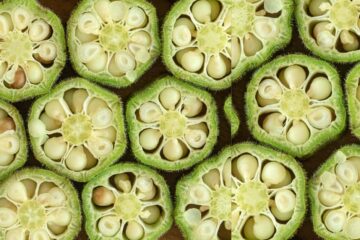Table of Contents
Introduction
Wheat berries, or complete wheat kernels, are wheat kernels’ germ, bran, and endosperm without the husk. Consumed whole as a topping or salad, boiled into a porridge, or counted to bread, wheat berries deliver a tough character to dishes.
Because the bran and germ are current in wheat berries, they are filled with vitamins, phytochemicals, minerals, fiber, and beneficial fats. Unadulterated grains, by comparison, include the endosperm, which is the basis of starchy carbohydrates with protein and nutrients.
These highly nutritious proteins and complex carbohydrates supply so many vitamins & minerals. They are established in most health food stores and arrive in different types, including hard and soft.
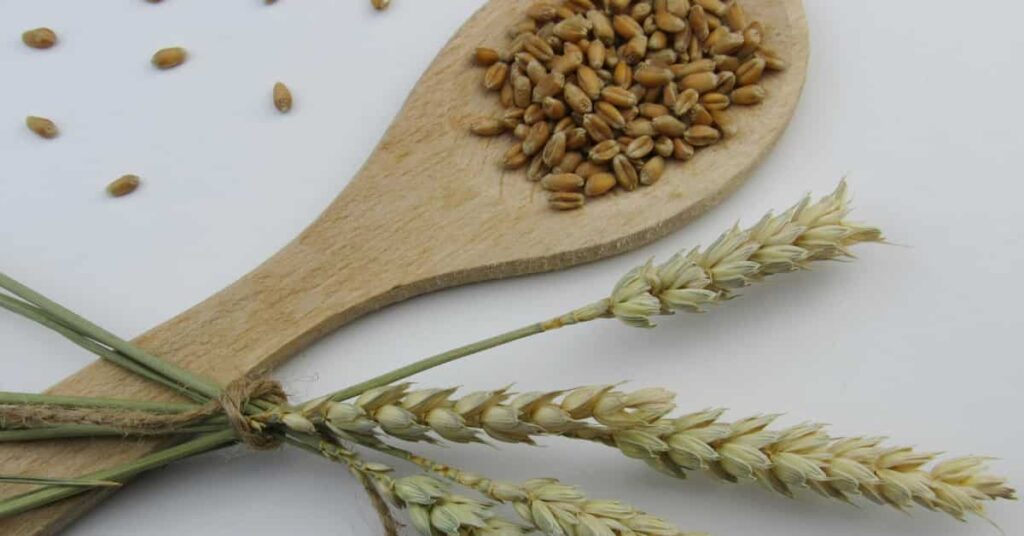
Wheat Berries
Wheat berries, usually named the whole grain form of wheat, are the palatable kernels of the wheat plant. They are the whole seed, consisting of three regions: the bran, germ, and endosperm. Unlike processed flour, it has all the nutritional superiority of the entire grain. It is extremely versatile and may be utilized in salads, pilafs, soups, and breakfast bowls.
The most famous method is grinding them into flour for baking. Packed with fiber, minerals, vitamins, and antioxidants, these little powerhouses deliver sustained energy and contribute to a level, wholesome diet. It contains forty of the 44 nutrients individuals need to live—pretty intense. So, whether you aim to improve the meals with nutritious elements or explore new culinary opportunities, it offer a pleasant and beneficial addition to the kitchen repertoire.
There are two primary varieties of wheat berries
- Hard Wheat
- Soft Wheat
Hard Wheat
Hard berries are used to make bread. They make tall, lofty loaves with excellent texture. Hard wheat has a more elevated protein count and more dry moisture than soft wheat.
There are hard white and hard red wheat. Let’s speak about hard red first.
Hard red wheat has such a taste that it produces wonderful bread. It is also comfortable to work with. Nevertheless, hard red is rich and will make a denser loaf if used alone.
The stiff white wheat mixture is much lighter than hard red. It’s also relatively easy to work with. Hard white wheat flour has a softer flavor than hard red wheat flour.
With its progressive protein count, hard wheat is my go-to for baking in the kitchen.
Soft wheat Berries
Soft wheat is best utilized for pastries, baked goods, and pie crusts. Its lower protein count makes baked goods much softer. It does not work for sourdough or yeast breads.
Soft white berries are excellent for biscuits and pastries.
wheat berries nutrition
The USDA delivers this nutrition data for a quarter cup serving of wheat berries (48g).
- Calories: 170
- Fat: 1.5g
- Carbohydrates: 32g
- Fiber: 4g
- Protein: 9g
- Zinc: 2.3mg
- Iron: 2.2mg
- Magnesium: 60mg
Carbs
Wheat berries are a origin of complex carbohydrates, with 32g per quarter mug (48g) serving. The exact serving offers 4g of fiber, which accounts for 14 percent of the recommended daily intake based on a 2,000-calorie-per-day diet.
Wheat berries’ glycemic index (GI) is around 30, making it a low-glycemic food. The GI ranges from 100, with foods under 55 considered low GI. Ingesting whole grains in this unprocessed form is healthier than processed flour. Bread made with wheat berries, for instance, changes the GI to 64 from 75.3
Fats
Wheat berries are low-fat, with just 1.5g per quarter mug (48g) serving. The type of fat in berries is unsaturated.
wheat berries protein
They are high in protein for a grain, with 9g per quarter mug (48g) serving. You can still wish to add protein to a meal of berries for a more balanced macronutrient shape, though. Wheat berries are not a whole protein source as they do not contain all the necessary amino acids.
Vitamins and Minerals
Several paramount vitamins and minerals are current in high amounts in wheat berries. These contain iron, magnesium, vitamin B6, and zinc. Other vitamins and minerals in berries contain phosphorus, thiamin, niacin, manganese, and calcium.
Calories
A quarter mug (48g) serving of berries delivers 170 calories, 72% of which are carbohydrates, 20% protein, and 8% fat.
wheat berries powder
“Wheat berries powder” refers to whole wheat flour milled or ground from the whole, natural wheat kernel (the wheat berry). It emphasizes that the flour keeps all of its original features and nutrients.
Here is a clear breakdown of what wheat berry powder/flour is, how it’s made, and its key features:
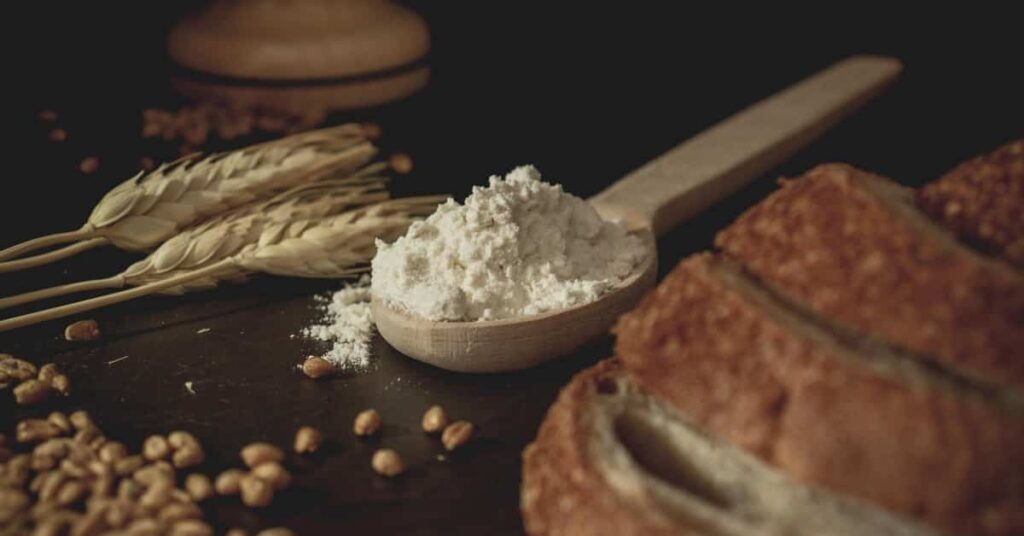
1. What “Wheat Berries Powder” Is
- Whole Wheat Flour: When you grind a wheat berry, you turn the whole kernel—the bran, germ, and endosperm—into a nicely powder, resulting in 100 percent whole wheat flour.
- Nutritional Integrity: The term “wheat berries powder” often stresses that the entire grain’s nutritional value is intact, unlike refined flours, which remove the bran and germ.
2. How It’s Made
- Grinding Process: You cannot simply grind berries in a standard food processor. It requires a powerful appliance, such as:
- A dedicated electric or hand-crank grain mill (for a consistent, fine powder) is needed.
- A High-Speed Blender (like a Vitamix, though the texture may be slightly coarser).
- A Large Coffee Grinder (suitable for tiny batches).
- The Transformation: One cup of dry wheat berries typically yields approximately half a cup of freshly ground whole wheat flour.
3. Key Nutritional Differences (vs. Refined Flour)
The powder retains the nutritional benefits detailed previously because it includes all three parts of the kernel:
- Bran (Outer Layer): Provides most fiber, B vitamins, and minerals.
- Germ (Embryo): Contains healthy fats, Vitamin E, B vitamins, and antioxidants.
- Endosperm (Starchy Interior): Primarily provides starchy carbohydrates and protein.
Refined flour is only the endosperm, making “wheat berries powder” significantly higher in fiber, protein, healthy fats, and micronutrients.
4. Characteristics in Baking
Using fresh-ground wheat berry powder (whole wheat flour) in baking has specific characteristics you need to be aware of:
- Texture: The bran’s high fiber content interferes with gluten development and makes baked goods denser than those made with all-purpose or white flour.
- Flavor: It has a distinct, nutty, and slightly earthy or robust flavor compared to the mild taste of white flour.
- Absorbency: Freshly milled flour absorbs more liquid than store-bought flour. Recipes often need to be adjusted with extra liquid (hydration) to account for this.
- Shelf Life: It’s best used quickly. Since the germ contains healthy oils, fresh whole wheat flour can rancid faster than white flour. It should be stored in an airtight box, ideally in the freezer, to continue freshness and nutritional value.
5. Types of Wheat Berries for Different Powders
Different varieties of wheat berries are milled to produce flours for specific uses:
- Hard Wheat Berries (Red or White): Have a higher protein (gluten) content, making them ideal for high-rising, yeasted products like breads, rolls, and pizza dough.
- Soft Wheat Berries (White): Have a lower protein content, making them better for tender, quick-baked goods like muffins, cookies, cakes, and pastries.
- “All-Purpose” Blend: Home millers often create a whole-grain “all-purpose” flour by blending equal parts hard white and soft white wheat berries before grinding.

wheat berries benefits
Wheat berries, the whole unprocessed wheat kernels, are a nutritional powerhouse offering numerous health benefits. Here are 12 detailed points:
- Very Good Source of Dietary Fiber: Wheat berries are exceptionally high in soluble and insoluble dietary fiber. This bulk promotes regular bowel movements, helps prevent constipation, and supports overall colon health.
- Supports Heart Health by Lowering Cholesterol: The high soluble fiber content helps reduce levels of low-density lipoprotein (LDL), often called bad cholesterol, by binding to it in the digestive tract & facilitating its removal from the body, thereby lowering the risk of heart disease.
- Assists in Blood Sugar Regulation: Its lower GI (glycemic index) means it causes a slower, more gradual expand in blood sugar compared to refined grains. The fiber slows glucose absorption, making it an excellent choice for managing blood sugar and reducing the risk of type 2 diabetes.
- Promotes Satiety and Weight Management: Combining high fiber and protein increases feelings of fullness (satiety), which can reduce overall calorie intake and curb the desire to snack on unhealthy foods, thereby supporting weight loss or maintenance efforts.
- Rich Source of Plant-Based Protein: Wheat berries provide a substantial amount of plant-based protein, essential for muscle repair, growth, and overall body function. Thus, they are a valuable component of vegetarian and vegan diets.
- Packed with Essential Vitamins: They contain B vitamins. These vitamins are vital for energy production, nervous system function, and cell metabolism, with Folate being particularly important during pregnancy.
- High in Magnesium: Wheat berries are a good source of magnesium, a mineral crucial for over 300 enzyme reactions in the body. It supports strong bones, nerve and muscle function, and helps maintain normal blood pressure.
- Contributes to Bone Health with Manganese and Phosphorus: They are a significant source of manganese, which plays a role in bone formation and synthesizing bone cartilage. Phosphorus is also present and essential for bone structure and various physiological processes.
- Provides a Good Supply of Iron: Iron is vital for the layout of hemoglobin in red blood cell, which transports oxygen throughout the body. Regular consumption may assist in preventing iron-deficiency anemia and boosting overall energy levels.
- Antioxidant Properties: Wheat berries contain various antioxidants and phytochemicals, such as ferulic acid and lignans, which are primarily concentrated in the bran and germ. These compounds assist in combating oxidative stress and free radical damage in the body.
- Supports a Healthy Gut Microbiota: The insoluble fiber in wheat berries acts as a prebiotic, feeding beneficial bacteria in the gut. A diverse & healthy gut microbiota is connected to improved digestion, immunity, and mental health.
- May Lower Risk of Certain Cancers: Studies suggest that the high fiber, antioxidants (like selenium and Vitamin E), and phytochemicals (like lignans) in whole grains like wheat berries may contribute to a reduced risk of certain cancers, particularly colorectal and breast cancers.
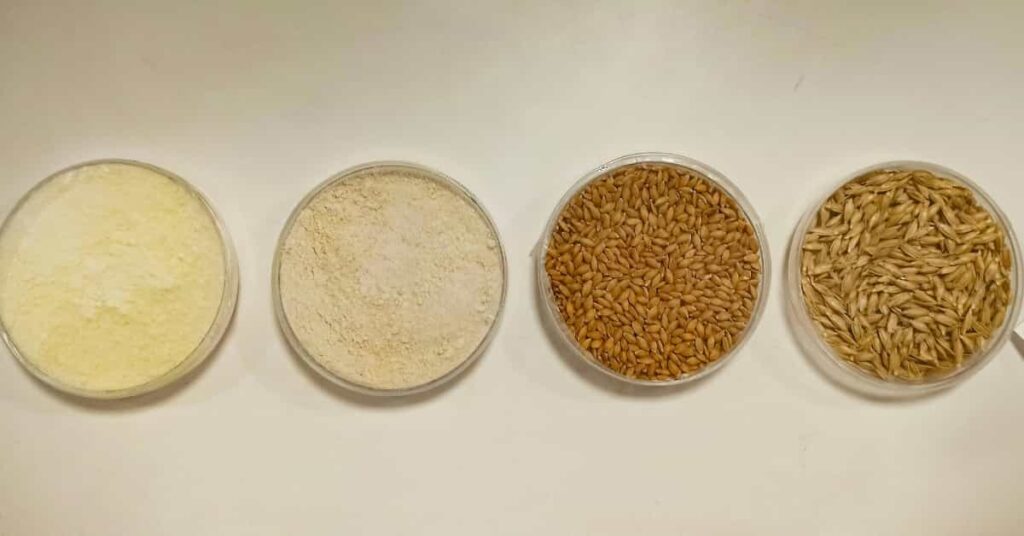
wheat berries in India
While “wheat berries” is recognized in India by health-conscious consumers, the generic and most common name for the whole, intact wheat kernel is Sabut Gehun (whole wheat grain) or Muzhu Godhumai in South India.
These whole kernels are the fundamental source of all wheat products, primarily serving as the raw material for milling fresh Atta (whole wheat flour) in the numerous small, local mills (chakki) or homes, thereby retaining 100% of the fiber-rich bran and nutrient-dense germ. Beyond milling, the whole kernel is traditionally soaked and slow-cooked to create hearty, wholesome dishes like Gehun ki Khichdi or Namkeen Ghoogri, a savory Rajasthani preparation, offering a chewy, highly nutritious alternative to rice. It is crucial to distinguish the wheat berry from the popular Indian staple Daliya (broken/cracked wheat), the fragmented whole kernel, favored for its quicker cooking time in making porridges and upma.
Wheat berries uses and recipe.
- Use them in salads
- Mix them with dried fruit.
- Make breakfast porridge
- Add them to soups
- Serve with mushrooms
- Throw them in chili.
- Enjoy them plain with olive oil, black pepper, and sea salt.
- Add them to a burrito bowl.
- Use them in breads
Wheat berries can be utilized in everything from chilis to soups, but two of our favorite methods to enjoy them are in salads & baked goods.
Conclusion
Wheat berries, often called the whole grain form of wheat, are the edible kernels that comprise the wheat plant. They are the complete seed, consisting of three parts: the bran, germ, and endosperm. Unlike processed flour, wheat berries retain all the nutritional goodness of the entire grain. These are incredibly versatile and can be used in salads, soups, pilafs, and breakfast bowls.

